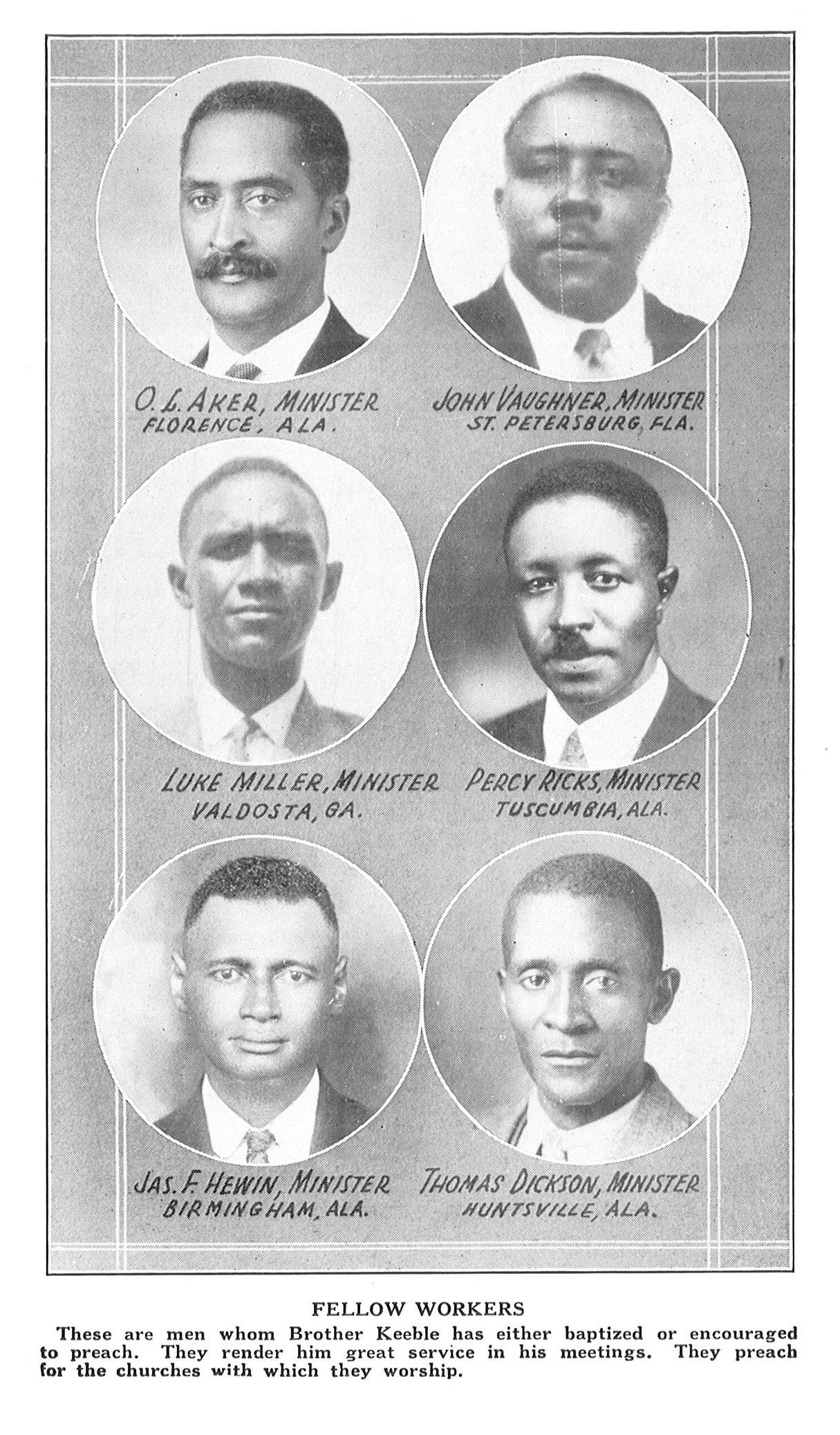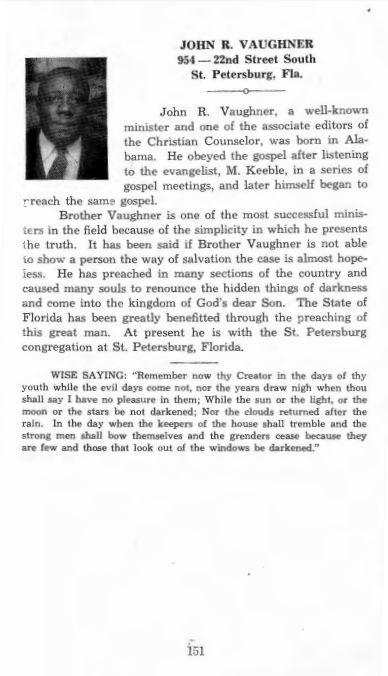In conjunction with our current exhibit, “The book will be preaching after you and I have gone home”: Marshall Keeble’s Print Legacy we’ll be featuring blog posts contributed by our student workers to provide expanded content on the “Fellow Workers” pictured in Biography and Sermons of Marshall Keeble, Evangelist. Today’s post was written by Jeaniece Silas and Sarah Dillinger. Jeaniece Silas is a Senior Social Work major and child and family services minor from Fort Worth, Texas. She has been a student worker in Special Collections for three years. Jeaniece enjoys processing collections and finding out historical information while working in Special Collections and hopes to pursue a career in Social work when she graduates. Sarah is a Senior Social Studies major from Pittsburgh, Pennsylvania. She has been a student worker in Special Collections for three years. Sarah enjoys the research and connections she makes while working in Special Collections and hopes to pursue a career in history teaching when she graduates.

1931 photographs of men Marshall Keeble either baptized or encouraged to preach. B. C. Goodpasture, ed., “Biography and Sermons of Marshall Keeble, Evangelist” (Nashville: Gospel Advocate Company, 1931), 24-25.
After extensive research, neither of us could find any information on Thomas Dickson and James F. Hewin who are two of the six men pictured in Marshall Keeble’s biography as men Marshall Keeble influenced. Hopefully, in the near future, new information regarding these two men will appear so that researchers can continue looking at the impact Marshall Keeble had on the Church of Christ movement within the African American community.
We used the following resources:
- www.restorationserialsindex.org
- https://www.findagrave.com/
- http://gaobit.lipscomb.edu/ResultsPage.asp
- Our Ministers and Song Leaders of the Church of Christ
- DC@ACU
- We also searched Google and multiple Gospel Advocate periodicals

